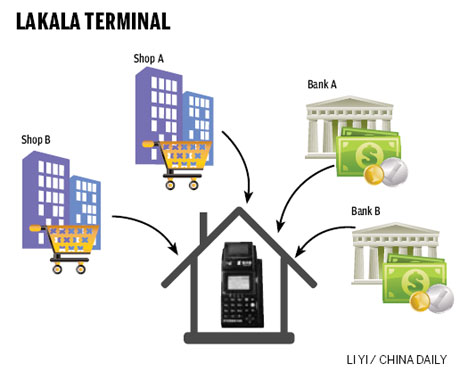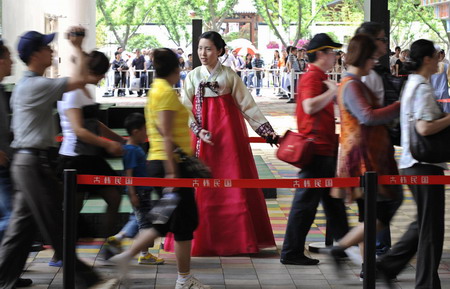Society
- Details
- By David Cao
- Hits: 2097

Chinese Buddhist monks and archaeologists revealed what they believed to be top part of the skull of Sakyamuni, the founder of Buddhism, Saturday morning in east China's Jiangsu Province.
The object, taken out for the first time around 9 am from a miniature gold coffin nestled inside a silver one, was part of Buddha's parietal bone, said Master Chuan Yin, president of the Buddhist Association of China, after attending the worshipping ceremony held in Qixia Temple in Nanjing, capital of Jiangsu Province.
The bone, irregular and light brown, looked like a small rock. "It is full of cell-like cavities, just like a honeycomb," said Hua Guorong, deputy head of Nanjing City Museum.
"Our findings conform with the descriptions of the parietal bone in historical records," said Master Xue Cheng, vice president of the association, adding the bone was hugely sacred for Buddhists.
Besides Sakyamuni's remains, ten sacred pieces of remains of other Buddhas were also found in another gold and silver mini-coffin.
- Details
- By Ray Kwong
- Hits: 1004
People have been trying to define China's role on the global stage for a lot of years. Having read a big chunk on the subject, this recent riff from the Washington Post's Ezra Klein got my attention:
"Americans don't necessarily like funding the military and aid expenditures that go along with being the world's single superpower, but they're pretty into the idea of being that superpower. That's why the conflict with China that's implied in American political rhetoric is that they're going to 'catch up' to America, or they'll have the fastest train and we won't. They have more people, faster growth, a bigger class of freshly-minted engineers, and so on. To the American mind, it stands to reason that they'd want to make a play for the crown.
And maybe they will, eventually. But the more common policy conflict between America and China right now is that we want them to step up and do more on the international stage and they want to be left alone to do less so they can focus on domestic development. Afghanistan, global stimulus, global warming, Iran, and North Korea all follow this pattern. The Chinese phrase for their approach is 'Keeping a Low Profile and Taking a Proactive Role When Feasible,' and they're putting a fair amount of effort into arguing for it."
While this might oversimplify a story of mismatched interests, values, and capabilities, I think as far as 20,000-foot view summaries go, it hits the nail on the head.
If you want to really get into it, read what Stephen Goldsmith and Daniel Wagner have to say. I don't agree with the conclusion, but it's a good issue-packed diatribe nonetheless.
- Details
- By David Cao
- Hits: 721
The basic premise behind my current research program is that some governments are more heavily involved than others in their respective economies. And a further assumption, supported by economic theory, is that greater state involvement equals lower efficiency, profitability and competitiveness. For me, two of the most obvious reference points are the United States and China.
As I have looked closely at how China’s government has guided and supported its auto industry, I have also begun to ask some important questions: Why does government’s involvement in economic development necessarily have to be negative? And why is China’s government able to manage the growth of national champions while the U.S. government still seems content to let the market do its job and let the chips fall where they may?
Last week I received a somewhat last-minute invitation by a company named Ener1 to attend a U.S.-China Advanced Technology Vehicle Summit in Indianapolis, Indiana. The chief attraction for me was the fact that dozens of Chinese automobile company executives and government officials would be in attendance, so my expectation was that I might get to chat with a few of them on the sidelines.
While my expectations were indeed met – I had a chance to talk with people from Geely, Dongfeng and BYD – they were ultimately exceeded. My unexpected find was a number of American auto supplier executives who were excited about state and local governments in Indiana, the environment for electric vehicle innovation there, and their opportunities in China.
The day I arrived at the summit the folks at Ener1 were excited about the announcement of a joint venture between their EnerDel subsidiary and Wanxiang of Hangzhou, Zhejiang Province. Wanxiang is the largest tier-1 auto parts supplier in China. During 2010 the joint venture formed by the two companies will begin producing lithium-ion battery systems for Wanxiang’s existing customer base in China.
Read more: A China-Indiana Connection For New Energy Vehicles
- Details
- By David Cao
- Hits: 1808

Forget lining up at banks, the phone company or other retail outlets to pay your bills. In China, the future of paying your bills easily from the comfort of your own home may well have arrived.
Enter the Mini Lakala home payment machine.
- Details
- By David Cao
- Hits: 1030

A Mandarin-speaking Korean woman ushers visitors into the Republic of Korea Pavilion at the Shanghai World Expo site, on Wednesday, May 26, 2010, its National Pavilion Day. "Ahn-nyung-ha-sae-yo" is Korean for "Hello."
More Articles …
Page 153 of 255